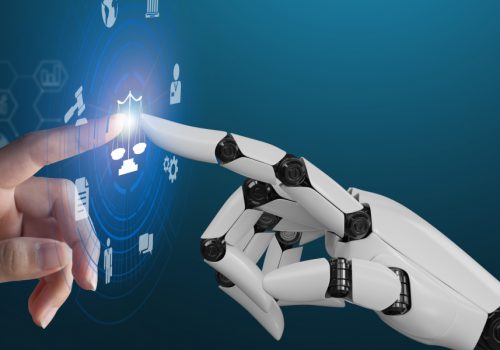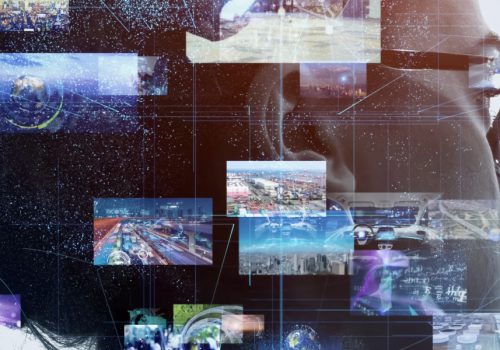The world of work is reinventing itself at breakneck speed. OH&S must not only keep up, but think one step ahead to keep workers safe.
It is tempting to attribute the increased profile now given to occupational health and safety (OH&S) to the COVID-19 pandemic. But while in many organizations the pandemic shone a spotlight on OH&S management, there are other issues which will keep OH&S at the fore throughout the next decade.
These include new risks associated with climate change, transformations in the world of work such as remote/home working, a much-needed focus on mental wellbeing, and the flexible employment models typical in the gig economy. Alongside this sit broader trends such as new technology and demographic change.
Changing societal expectations are also having an effect, reflected in the International Labour Organization’s declaration in 2022 that a safe and healthy working environment is a fundamental principle and right at work. OH&S is also a key component of an organization’s commitment to the social aspect of environmental, social and governance (ESG) investment. Progress on diversity and inclusion also raises issues for OH&S management, where an at times “one size fits all” approach insufficiently addresses the individual needs of workers.
Psychological health and wellbeing
While many of the immediate OH&S challenges presented by COVID-19 have now abated, a number of effects persist. Perhaps the most notable of these is workers’ increased awareness of the potential impact of work on their psychological health and wellbeing. With this also comes an expectation that organizations could and should do more to manage this impact – alongside the obligations they already had with regards to workers’ physical health and safety.
This issue has been at the centre of much conversation, and a variety of guidance is available. ISO 45003, for example, is an International Standard providing guidance for managing psychological risk applicable to organizations of all sizes.
It is clear that people’s wellbeing can be negatively impacted at work – whether by how work is organized, social factors or aspects of the work environment. But despite evidence that effective measures can result in better mental health, job satisfaction and productivity, it is not clear how many organizations have yet taken such measures.
In fact, the scale of the issue is only now being fully understood. The latest World Risk Poll from the Lloyd’s Register Foundation found that violence and harassment in the workplace is endemic and persistent at a global level, with one in five people having experienced some form of violence and harassment at work in their lifetime. This is why organizations must look at their values, social structures and the environment they provide for their workers to address these endemic risks.
Climate change
Climate change is already impacting millions of workers across the globe. The most widely publicized manifestations of climate change tend to be extreme weather events, such as extremes of heat, cold, wind and rain, the effects of which are not limited to those working outdoors. But the impacts of climate change go far beyond weather and include long-term effects on biodiversity, food and water supplies, the resilience required of our infrastructure, and the means by which we produce our energy. The steps needed both to reduce emissions and to adapt our world to the changes that are already inevitable will bring new technologies, new jobs and new ways of working, all with their own hazards and risks.
Currently, it appears that many organizations are still treating the effects of climate change as “one-off” events, with relatively few proactively considering the full range of ways in which the health and safety of their workers may be affected. More needs to be done to raise the profile of this issue with organizations. Within ISO/TC 283 – the technical committee dedicated to the standardization of occupational health and safety management – we have formed a new dedicated group to focus attention on this and develop guidance to help organizations address this challenge.
New technology
From an OH&S perspective, advances in technology bring both risks and opportunities. They may also add new capabilities which help us better manage workplace health and safety. For example, where humans must interact with machines and robots whose actions evolve over time through machine learning, there may be new or increased risks. Conversely, the opportunity to deploy drones and robots in place of humans in hazardous environments will enable us to reduce risks, provided any risks arising from hacking or malfunction can be addressed.
Meanwhile, smart PPE, wearables and other monitoring technologies will provide workers with additional physical protection, making the worker and the work environment part of a real-time connected network. Virtual reality will provide new possibilities for OH&S training and capability development.

Demographic change
Workplace demographic changes are set to accelerate in the coming years. Some countries are experiencing shrinking populations; many more are experiencing ageing populations. Conversely, others, particularly in Africa, have growing, and predominantly young, populations. In many countries, we are likely to see more people carrying on working into old age, more female workers, and more use of migrant or immigrant workers who may have varying levels of competence in the local working language.
We will have a greater age range within the workforce than ever before, with more divergence in people’s learning styles, literacy levels and ways of consuming information. From an OH&S perspective, these changes will require organizations to pay more attention to the diversity within the workforce and people’s individual needs. For example, how can they best induct, train, develop and communicate with such a broad range of people?
Alongside these demographic changes, we see changing attitudes to work and changing expectations of employment. The younger generation in the workforce view employment very differently to the older generation – they rarely plan to stay with one employer for a long period, and are less concerned with job security, preferring, or expecting to have, more varied careers. They want to work for organizations whose purpose and values they can positively relate to, and they have clear expectations about the way they are managed and developed.
To attract and retain talent from this younger generation, organizations will need to address these expectations, while also being prepared for greater staff turnover, with the associated challenges in maintaining OH&S competency and performance.
The contribution of ISO
Many of the issues and trends affecting OH&S, now and into the future, are global in nature. International collaboration must therefore be the foundation of progress.
ISO is a platform and powerful mechanism for such collaboration: 73 countries are currently participating in the work of ISO/TC 283 and a further 26 are observing its progress with much interest. Our work is also aided by ten international liaison bodies including professional organizations and representatives of employers and workers alike.
This enables effective progress in the form of action. ISO/PAS 45005 is a publicly available specification giving guidelines to organizations on how to protect workers from the risks of COVID-19. It was published swiftly in the early months of the pandemic and provided a means to rapidly share recommendations and good practice. These sit alongside regulation in countries where this exists, and fill the gap in countries where regulation may be lacking.
So, while there are many long-established and respected sources of OH&S advice and guidance at national and international level, I believe that ISO is making its own distinctive contribution through collaboration and the building of international consensus around its OH&S standards and other guidance documents.
Disclaimer: PECB has obtained permission to publish the articles written by ISO.









